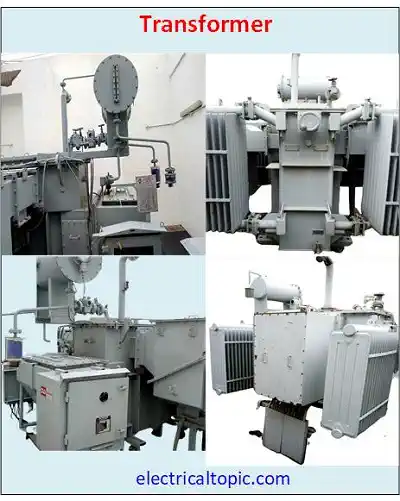Step down Transformer Working principle, Connection diagram and Applications.
1 - Step Down Transformer:

Step down transformer is an electrical static device which is used for voltage transformation as high voltage to low voltage at same frequency. It is mostly used in transmission and distribution line for voltage increasing. It has two Windings one is primary and other is secondary. It works on magnetic flux transformation.
When primary winding is charged with primary voltage this voltage may be high or low according faraday law the back emf is generated into primary winding resultant magnetic flux will be produce and it will be transferred into secondary winding. Secondary winding will generate voltage as per coil turns.
2 - Construction of step Down Transformer:
Transformer is the group of electrical parts which is assembled on workshop. The details of electrical parts are given below mentioned.
1- Magnetic Core:
It is the basic parts of transformer which is used for winding installation. Three type core is used as core, shell and berry type. It is the bunch of laminated iron strip. The magnetic flux is produced on iron core and it is also linked with secondary windings so magnetic flux is transferred on secondary windings.
2- Windings :
Two windings are used in Transformers, one is primary and other is secondary which is made of copper and aluminium conductor. As per step down transformer the turns of primary windings is more and secondary winding is less. Primary is connected with high voltage and low voltage is generated at secondary side. If we talk about current, the low current is circulated on primary and high current is received at secondary side.
The windings of transformer is installed on the laminated iron core which is made of iron core. Core is laminated for removing eddy current.
3 - Connection diagram of Step Down Transformer:

Above shown image, the primary winding is more turns winding and secondary is less turns winding.
4 - Working principle
When the HT power supply is received in primary winding then due to characteristic of the alternative current, the magnetic flux is produced which is transferred in secondary winding. A induced emf is produced on secondary winding according winding turns. Secondary winding turns are low in comparison primary so the low voltage will be produce.
The voltage is transformed as 11 KV to 433 V, 33 KV to 433 V in distribution system. In transmission system the voltage is transformed as 400 KV to 220 KV, 220 KV to 132, 132 to 66 KV, 66 KV to 33KV.
5 - Applications of Step Down Transformer
Step up transformer has many applications which below mentioned.
- Microwave oven.
- X-ray machines.
- In transmission line for voltage transformation.